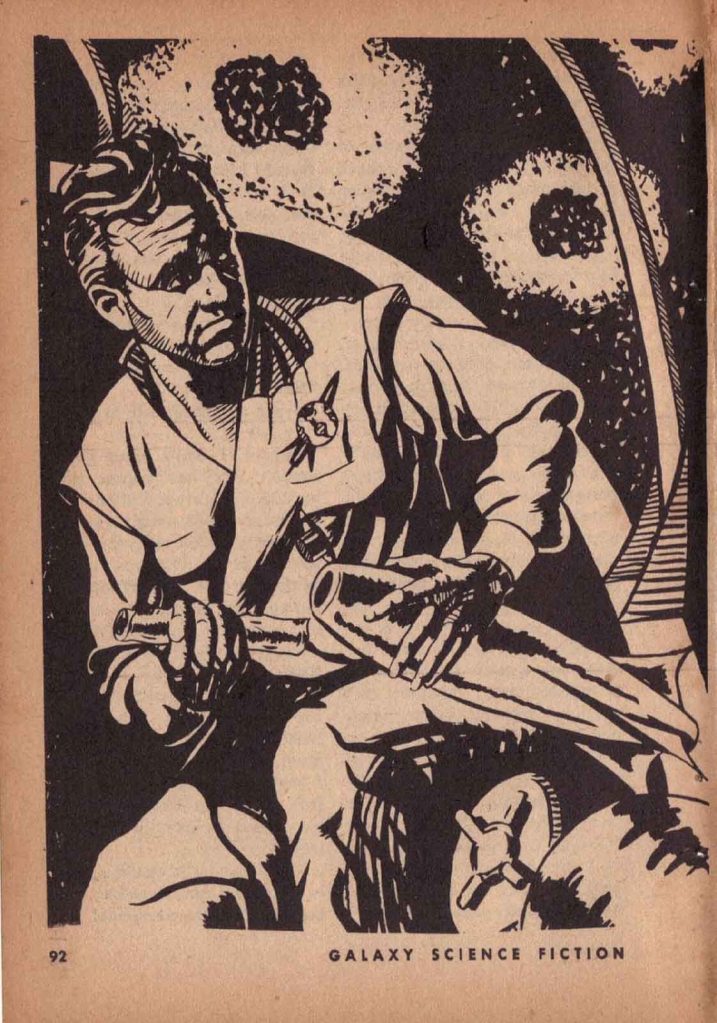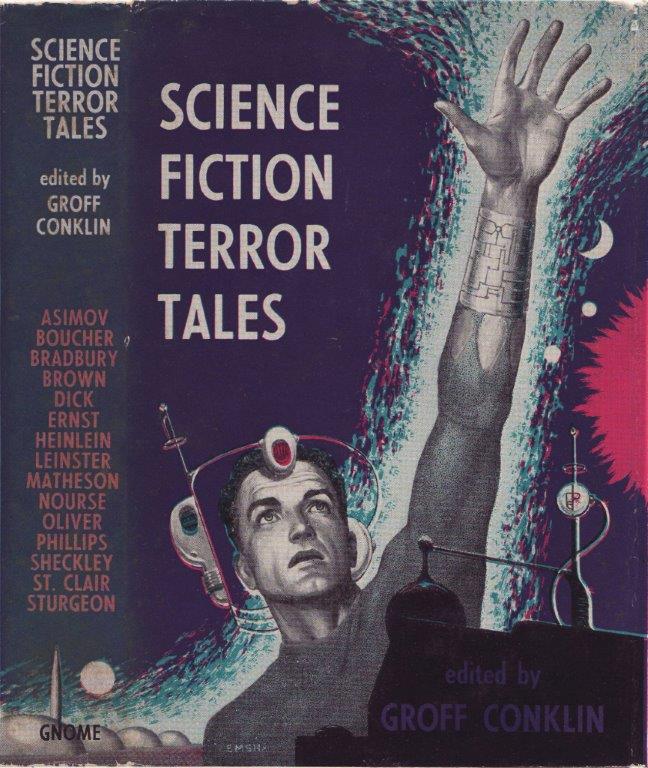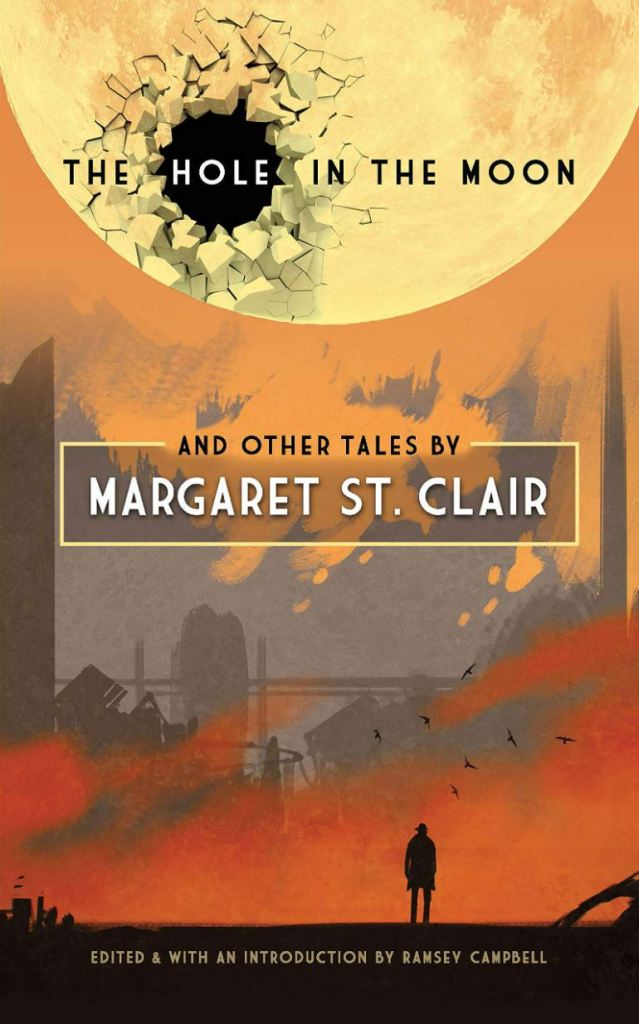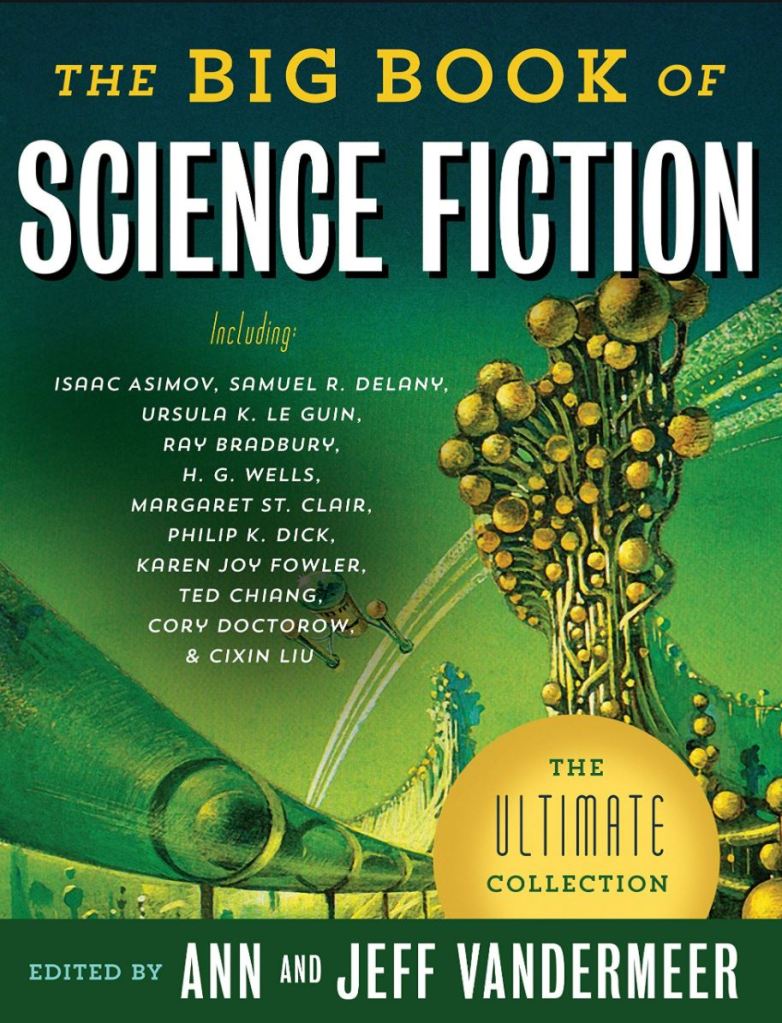
Group Read 27: The Big Book of Science Fiction
Story #22 of 107: “The Prott” by Margarett St. Clair
“Prott” by Margaret St. Clair was first published in the January 1953 issue of Galaxy Science Fiction, and later anthologized by Groff Conklin in Science Fiction Terror Tales in the U.S. and by Edmund Crispin in Best SF in Great Britain. I don’t remember reading anything before by Margaret St. Clair, or by her pen name Iris Seabright, but I have seen both names enough over the years to know she was around. Wikipedia says she published over 130 stories. St. Clair only has one book in print at Amazon, a 2019 collection of 17 stories, The Hole in the Moon and Other Tales, but “Prott” isn’t included. James Nicolls reviews The Best of Margaret St. Clair edited by Martin H. Greenberg that came out in 1985. That collection did include “Prott.”

“Prott” is a first contact story, and St. Clair worked hard to make her aliens alien, which is something I admire. She also focused on the problem of communication, which is another theme I like. The story is told in a frame of two men having drinks and one of them gives the other a diary to read which is the story. It’s from an unnamed academic who had gone out beyond the asteroid belt to study the sex life of the Prott, an alien race who lives in space that looks roughly shaped like poached eggs. We learn of his frustrating effort to communicate with the aliens via telepathy and a threat to humanity. The story is slightly humorous in tone, and the threat is a distant cousin to what Fredric Brown described in Martians, Go Home. It even shares a bit of the puzzle we saw in Murray Leinster’s “First Contact.”
The problem with “Prott” is it suffers the fate of all first contact stories. Writers can describe their aliens in various ways so that they look very alien, and make them very difficult to talk to, but once any kind of communication is establish, it’s hard to wrap up the story without resorting to a gimmick to distract us from the fact we can’t ever know the alien. One of the best first contact stories is “Story of Your Life” by Ted Chiang filmed as Arrival. That story wraps ups with a time paradox gimmick that is very satisfying. In the Leinster story, the gimmick involves trading spaceships. In The Sparrow by Mary Doria Russell we’re left with an spiritual conundrum of why would God do something so horrible to a Catholic priest. “Prott” leaves us with a bit of comic horror. Unfortunately, for me, it was an unsatisfying payoff.

St. Clair builds up a nice mystery about the Prott but leaves the ardent researcher with a frustrating problem he can’t solve. Readers are just as frustrated because we don’t know what —– the —- is either. The release of this up-to-now mostly serious story is to wrap things up with an O. Henry ending. That concluding gimmick wasn’t satisfying for me.
That’s the problem with first contact stories, it’s almost impossible to conclude them in a satisfying way. In the novel Contact by Carl Sagan there is a tremendously long build-up to create the mystery of the aliens until we’re finally dazzled by a show of their powers. In the end Ellie is returned to Earth at the same time she left with no evidence of the aliens’ existence. She’s like Dorothy waking up in the film version of The Wizard of Oz, or any Christian that must claim they know God exists because of their faith. In the film Close Encounters of the Third Kind we finally get to meet aliens, but before we learn anything real, Roy takes off with the aliens in their flying saucers. The gimmick is a sleight-of-hand bait and switch. We’re happy for Roy, but we’re left with nothing.
In fiction where we do get to know aliens they often become like us. In the novels Children of Time and Children of Ruin by Adrian Tchaikovsky the spider-like alien characters discovered in the first volume become more human in the second volume. Tchaikovsky retries to introduce alienness with uplifted octopi, and a new alien race and ends the second book before we get too chummy with those alien characters. Tchaikovsky does a good job of creating a sense of alienness but the more time we spend with these new creatures the more we have to relate to them in human terms. I believe these novels are popular because his gimmick is to end the story at the right moment.
In “Prott” the less we know about the Prott the more alien they seem. Yet, we never learn what they are, how they evolved, what kind of environment and ecology they live in, how they find meaning, or anything about their social structure. The conclusion is they become pests to us, which is relatable to the reader, and the gimmick. What I wanted was our Margaret Meade like protagonist to observe more customs. We were promised sex. You have to give Philip Jose Farmer credit for being explicit for his stories of alien encounters..
We have always wondered if we’re alone in the multiverse, and if we’re not, what strange beings could exist that we can’t comprehend? It’s an impossible task for the science fiction writer to describe the indescribable. Just look at all the versions of Star Trek and all the aliens we’ve encountered in countless episodes over the decades. In the end, most of the stories are about Klingons and Vulcans who are all too much like us. One reason I believe H. P. Lovecraft was so popular is he invented so many horrible alien monstrosities that we only know from awe and horror. But doesn’t religion use the same gimmick?
“Prott” is another nice try at creating an alien, but really just a minor effort. The reason why “The Martian Odyssey” was so successful, and so well anthologized is Tweel was such a great alien character. Stanley G. Weinbaum hit that one out of the park. The Prott aren’t that interesting. Neither was the structure of how St. Clair told her story, which was closer in style to the 19th century than what was innovative in the 1950s. I know I keep harping on this, but the competition at that time was “Coming Attraction” and “Fondly Fahrenheit.” St. Clair is doing a pale imitation of Poe.
James Wallace Harris, 9/30/21

Enemy Mine, both film and novella from Barry Longyear comes to mind. Review’s here: https://reiszwolf.wordpress.com/2015/06/01/enemy-mine-•-1979-•-sf-novella-by-barry-b-longyear/
LikeLike
In 1956 St. Clair published a short but interesting novel, Agent of the Unknown. There´s an ebook if you are interested.
LikeLike
I didn’t see it at Amazon. Where is it published?
LikeLike
Prott is a German family surname. How did we get to be Aliens?
LikeLike